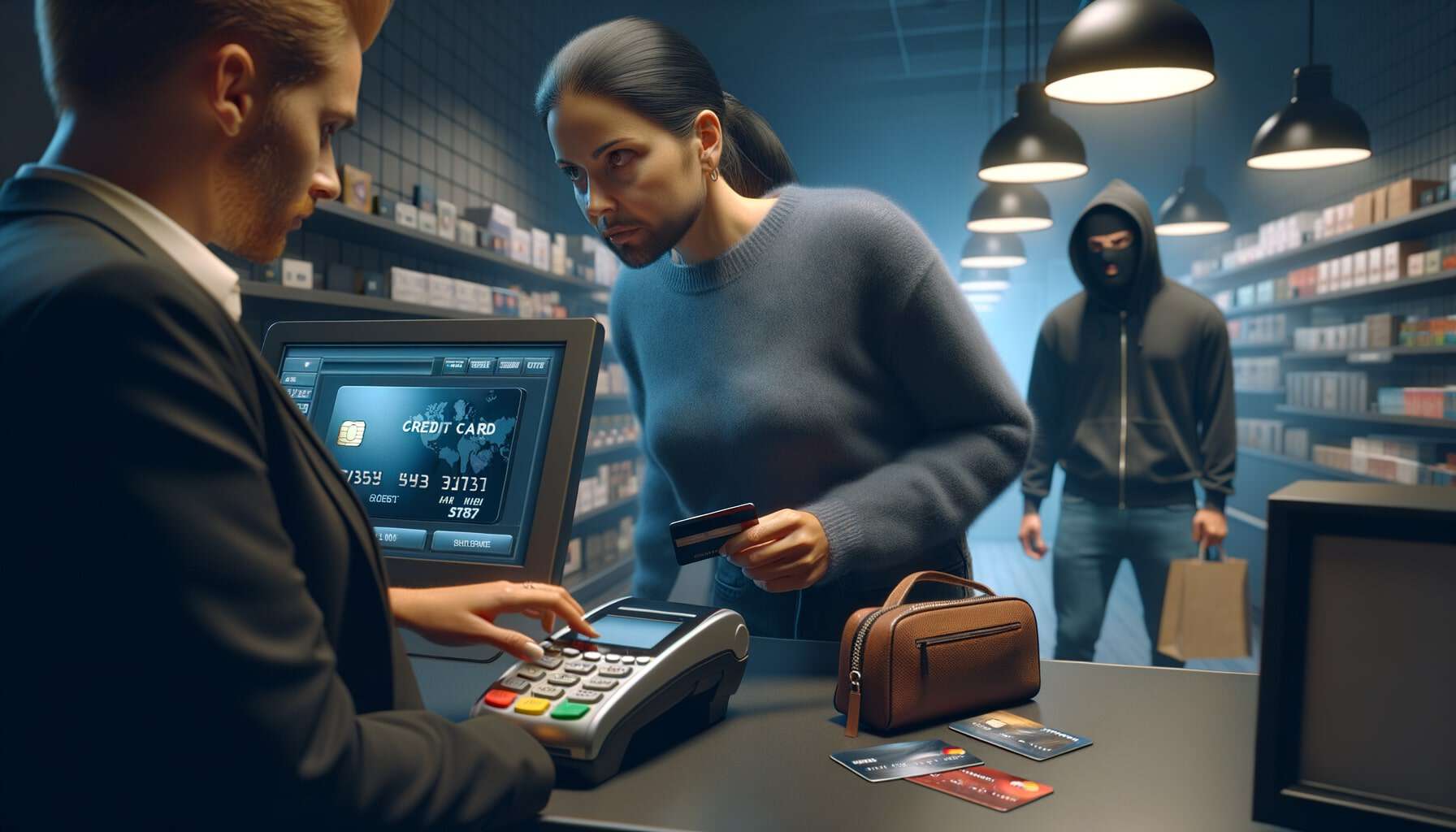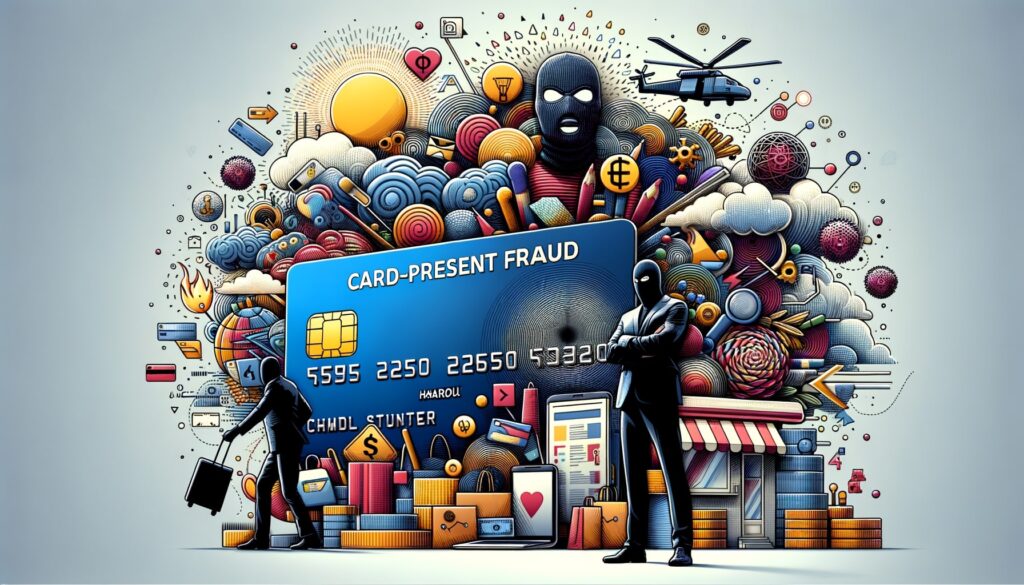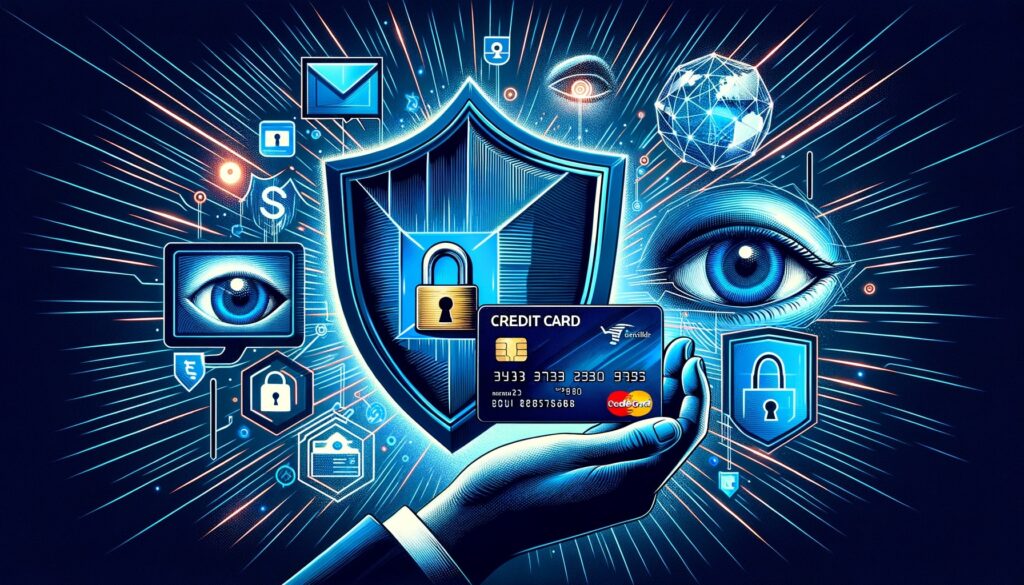
By American November 20, 2024
In today’s digital age, where online transactions have become the norm, it’s easy to overlook the risks associated with card-present fraud. Card-present fraud refers to fraudulent activities that occur when a criminal gains unauthorized access to a physical payment card and uses it to make unauthorized purchases or withdrawals. This type of fraud can have severe consequences for both individuals and businesses, leading to financial losses and damaged reputations.
To understand card-present fraud better, it’s essential to grasp the basics. Payment cards, such as credit or debit cards, contain sensitive information, including the cardholder’s name, card number, expiration date, and sometimes a security code. Criminals exploit vulnerabilities in the card-present environment, such as point-of-sale (POS) systems or ATMs, to obtain this information and carry out fraudulent activities.
Understanding Card-Present Fraud: Definition and Types
Card-present fraud refers to fraudulent activities that occur when a criminal physically possesses a payment card and uses it to make unauthorized transactions. This type of fraud typically involves stolen or counterfeit cards, and the criminal often impersonates the legitimate cardholder. There are several types of card-present fraud, including:
- Counterfeit Card Fraud: Criminals create fake payment cards by copying the information from legitimate cards onto counterfeit ones. These counterfeit cards are then used to make unauthorized purchases.
- Lost or Stolen Card Fraud: Criminals gain access to a genuine payment card through theft or by finding a lost card. They then use the card to make fraudulent transactions before the cardholder realizes it is missing.
- Card Skimming: Skimming devices are used to capture card information, such as the card number and PIN, when the card is swiped or inserted into a compromised payment terminal. This stolen data is then used to create counterfeit cards or make online purchases.
How Card-Present Fraud Works: A Step-by-Step Process
Card-present fraud typically follows a step-by-step process that involves various stages. Here is a breakdown of how this type of fraud works:
- Obtaining Card Information: Criminals acquire card information through various means, such as stealing physical cards, intercepting mail, or hacking into databases that store cardholder data.
- Creating Counterfeit Cards: If the criminal has access to cardholder data, they can use it to create counterfeit cards. This involves encoding the stolen information onto blank cards or reprogramming existing cards.
- Identifying Vulnerable Targets: Fraudsters identify vulnerable targets, such as businesses with weak security measures or individuals who are less likely to notice fraudulent transactions.
- Initiating Transactions: The criminal uses the counterfeit card to make purchases or withdraw cash from ATMs. They may also use stolen cards to make unauthorized transactions before the cardholder reports the loss or theft.
- Evading Detection: Fraudsters often employ various techniques to avoid detection, such as making small transactions to test the card’s validity or using multiple cards to spread the risk.
Types of Card-Present Fraud: A Comprehensive Overview
Card-present fraud encompasses various types of fraudulent activities. One common type is skimming, where criminals use devices to capture card information during legitimate transactions. These devices, known as skimmers, can be attached to ATMs, gas pumps, or even handheld card readers. Once the card information is captured, criminals can create counterfeit cards or use the stolen data for online purchases.
Another type of card-present fraud is called card-not-present (CNP) fraud. While it may seem contradictory, CNP fraud falls under the umbrella of card-present fraud because it involves using stolen card information to make online or phone purchases. Criminals obtain card details through various means, such as hacking databases or phishing scams, and then use the information to make unauthorized transactions.
Common Techniques Used in Card-Present Fraud: How Criminals Operate
Criminals employ various techniques to carry out card-present fraud successfully. One technique is the use of counterfeit cards. After obtaining card information through skimming or other means, criminals create counterfeit cards that resemble legitimate ones. They then use these cards to make purchases or withdraw cash from ATMs.
Another technique is known as card trapping. Criminals manipulate ATMs by placing a device that traps the card inside the machine. When a victim inserts their card, it gets stuck, and the criminal retrieves it later. Meanwhile, the victim assumes the machine has malfunctioned and leaves, unaware that their card has been compromised.
Identity theft is also a common technique used in card-present fraud. Criminals may steal personal information, such as social security numbers or addresses, to impersonate the cardholder and gain access to their accounts. This allows them to make unauthorized transactions without raising suspicion.
Identifying Vulnerabilities: Factors that Contribute to Card-Present Fraud
Several factors contribute to the vulnerability of card-present transactions. One significant factor is the lack of proper security measures in POS systems and ATMs. Outdated or poorly maintained systems can be easily compromised by criminals, allowing them to access card information without detection.
Additionally, human error plays a role in card-present fraud. Employees who mishandle payment cards or fail to follow security protocols can inadvertently expose sensitive information. Lack of proper training and awareness about fraud prevention can also contribute to vulnerabilities.
Another factor is the increasing sophistication of criminals. As technology advances, so do the techniques used by fraudsters. They constantly adapt and develop new methods to exploit weaknesses in payment systems, making it challenging for businesses and individuals to keep up with the evolving threats.
Preventive Measures: Strategies to Minimize Card-Present Fraud Risks
To minimize the risks of card-present fraud, businesses and individuals must implement preventive measures. One crucial step is to ensure the security of POS systems and ATMs. Regularly updating software, installing security patches, and using encryption technology can help protect against unauthorized access.
Implementing strong authentication measures, such as requiring PINs or biometric verification, adds an extra layer of security. This makes it more difficult for criminals to use stolen cards or impersonate cardholders.
Educating employees and customers about fraud prevention is also essential. Training programs can teach employees how to handle payment cards securely and recognize suspicious activities. Customers should be educated about protecting their card information, such as not sharing PINs or card details with anyone.
Detecting Card-Present Fraud: Signs and Indicators to Look Out For
Detecting card-present fraud can be challenging, but there are signs and indicators to look out for. One common indicator is unusual activity on a payment card statement. If there are unauthorized transactions or unfamiliar charges, it’s crucial to investigate further.
Another sign is the presence of suspicious devices or tampering on ATMs or POS systems. Skimmers or card-trapping devices may be attached to these machines, so it’s essential to be vigilant and report any suspicious findings to the appropriate authorities.
Unusual behavior from employees or customers can also be an indicator of card-present fraud. For example, an employee who consistently mishandles payment cards or a customer who appears nervous or evasive during a transaction may raise suspicion.
Reporting Card-Present Fraud: Steps to Take if You Become a Victim
If you become a victim of card-present fraud, it’s crucial to take immediate action to minimize the damage. The first step is to contact your bank or card issuer to report the unauthorized transactions. They can freeze your account, investigate the fraud, and potentially reimburse you for any losses.
It’s also important to file a police report. This creates an official record of the fraud and can aid in the investigation. Provide as much information as possible, including details of the fraudulent transactions and any evidence you may have, such as receipts or surveillance footage.
Additionally, reporting the fraud to the appropriate authorities, such as the Federal Trade Commission (FTC) or the local consumer protection agency, can help prevent further incidents and protect others from falling victim to the same fraudster.
Legal Consequences: Understanding the Penalties for Card-Present Fraud
Card-present fraud is a serious crime with severe legal consequences. The penalties vary depending on the jurisdiction and the specific circumstances of the fraud. In many countries, card-present fraud is considered a felony, punishable by imprisonment and hefty fines.
The penalties can be even more severe if the fraud involves large sums of money or if it is part of an organized criminal operation. In such cases, individuals involved in card-present fraud may face additional charges, such as conspiracy or money laundering, which carry even harsher penalties.
It’s important to note that even unintentional involvement in card-present fraud, such as unknowingly using a counterfeit card, can still result in legal consequences. Ignorance or lack of intent is not a valid defense in most jurisdictions.
The Role of EMV Technology in Combating Card-Present Fraud
EMV technology has played a significant role in combating card-present fraud. The introduction of chip cards has made it more challenging for criminals to create counterfeit cards. The key features of EMV technology include:
- Dynamic Data Encryption: EMV cards generate a unique transaction code for each transaction, making it nearly impossible for criminals to replicate the card’s data.
- Card Authentication: EMV cards have embedded microchips that authenticate the card’s legitimacy, reducing the risk of counterfeit card fraud.
- PIN Verification: EMV cards often require a PIN to complete a transaction, adding an extra layer of security compared to traditional magnetic stripe cards.
Card-Present Fraud vs. Card-Not-Present Fraud: Key Differences
While card-present fraud involves physical possession of a payment card, card-not-present fraud occurs when a criminal uses stolen card information to make unauthorized transactions without physically presenting the card. Some key differences between the two types of fraud include:
- Transaction Method: Card-present fraud involves physically presenting the card at a payment terminal, while card-not-present fraud occurs in online or remote transactions.
- Authentication Methods: Card-present transactions often require PIN verification, while card-not-present transactions rely on other authentication methods, such as CVV codes or one-time passwords.
- Fraud Detection Challenges: Detecting card-not-present fraud can be more challenging as there is no physical card involved, making it easier for criminals to remain undetected.
Frequently Asked Questions (FAQs)
Q1. What is the difference between card-present fraud and card-not-present fraud?
Card-present fraud refers to fraudulent activities that occur when a criminal gains unauthorized access to a physical payment card and uses it for unauthorized purchases or withdrawals. Card-not-present fraud, on the other hand, involves using stolen card information to make online or phone purchases.
Q2. How can I protect myself from card-present fraud?
To protect yourself from card-present fraud, be cautious when using payment cards at ATMs or POS systems. Check for any suspicious devices or tampering and cover your hand when entering your PIN. Regularly monitor your card statements for any unauthorized transactions and report them immediately.
Q3. What should businesses do to prevent card-present fraud?
Businesses should implement strong security measures, such as regularly updating POS systems and using encryption technology. They should also train employees on fraud prevention and educate customers about protecting their card information.
Q4. Can I get my money back if I am a victim of card-present fraud?
If you are a victim of card-present fraud, contact your bank or card issuer immediately to report the unauthorized transactions. They can freeze your account, investigate the fraud, and potentially reimburse you for any losses.
Q5. What are the legal consequences of card-present fraud?
Card-present fraud is a serious crime with severe legal consequences. The penalties vary depending on the jurisdiction and the specific circumstances of the fraud but can include imprisonment and hefty fines.
Conclusion
Card-present fraud poses significant risks to individuals and businesses alike. Understanding the basics, types, and techniques used in card-present fraud is crucial for prevention and detection. By implementing preventive measures, such as securing POS systems and educating employees and customers, the risks can be minimized.
If you become a victim of card-present fraud, taking immediate action, such as reporting the fraud to your bank and the authorities, is essential. Remember, card-present fraud is a serious crime with severe legal consequences, so it’s crucial to remain vigilant and take steps to protect yourself and your business from falling victim to this type of fraud.




